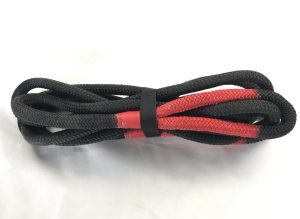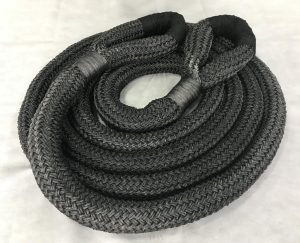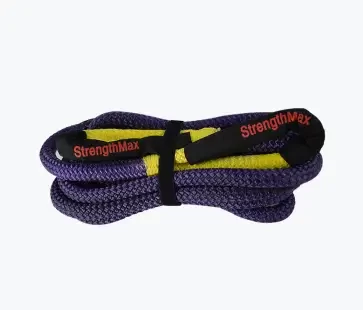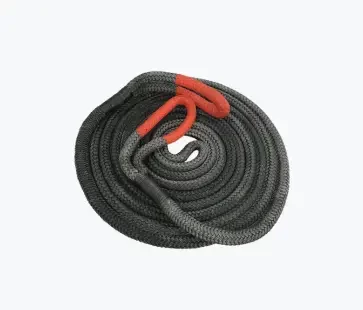Recovery tow ropes, including the dynamic Kinetic Tow Ropes, are indispensable tools for vehicle recovery, playing a pivotal role especially when navigating off-road terrains or overcoming obstacles like mud, sand, or snow. Among these, the best kinetic recovery ropes stand out for their superior ability to stretch and store kinetic energy, offering an enhanced recovery dynamic that is particularly effective in situations where a traditional pull might not suffice. Here we highlight the functionality of recovery tow ropes, the various types including kinetic options, and the critical aspects of their selection and use. Understanding the nuances of recovery tow ropes, especially identifying the best kinetic recovery ropes, will equip you with the knowledge to handle vehicle recoveries with confidence and safety, whether you’re an off-road enthusiast or someone who likes to be prepared for any situation.
Types of Recovery Tow Ropes
The realm of recovery tow ropes is broadly categorized into two main types: Classic and Super Ropes, each with its unique attributes and suited for different recovery scenarios.
Classic Recovery Tow Ropes:
These are the traditional workhorses of vehicle recovery. Known for their robustness and resilience, classic tow ropes are typically made from materials like nylon, which offers a blend of strength and minimal stretch. Ideal for standard towing tasks, these ropes are designed to withstand considerable loads, making them suitable for a wide range of vehicles from light cars to heavier SUVs.

Super Recovery Ropes:
A leap forward in tow rope technology, Super Ropes, also known as Kinetic Recovery Ropes, incorporate advanced materials and design principles to offer enhanced performance. Characterized by their exceptional elasticity and higher strength-to-weight ratios, these ropes are made from cutting-edge fibers like HMPE (High Modulus Polyethylene). The unique elasticity of Kinetic Recovery Ropes allows them to store kinetic energy, making them especially effective for dynamic recovery situations where a ‘snatch’ effect can help dislodge a stuck vehicle without causing jarring impacts.

Choosing between Classic and Super Recovery Ropes depends on several factors, including the specific recovery scenarios you anticipate, the types of vehicles involved, and personal preferences regarding handling and performance. This guide will further explore the features, safety considerations, and maintenance practices associated with these ropes, ensuring you make an informed decision tailored to your recovery needs.
FAQs about Recovery Tow Ropes
1. What is a recovery tow rope and how is it different from regular tow ropes?
A recovery tow rope is specifically designed for recovering vehicles that are stuck or immobile due to off-road conditions, like mud or sand. Unlike regular tow ropes, recovery ropes often have more elasticity and strength to handle the dynamic forces involved in recovery scenarios.
2. What are the different types of recovery tow ropes available?
The primary types include classic recovery tow ropes, which are sturdy and durable, and super recovery tow ropes, which are made from advanced materials for higher strength and flexibility. Additionally, there are kinetic ropes, which stretch to absorb the towing impact, and static ropes, which do not stretch, offering a more direct pull.
3. How do I choose the right recovery tow rope for my vehicle?
The choice depends on your vehicle’s weight and the situations you anticipate. For heavier vehicles or more challenging recovery situations, a rope with higher strength and elasticity, like a super or kinetic rope, is advisable.
4. How do I attach a recovery tow rope to my vehicle safely?
Always attach the rope to a designated recovery point on the vehicle. Ensure that the attachment hardware, like shackles, is rated for the load. Double-check that the connections are secure before attempting a recovery.
5. What safety precautions should I take when using a recovery tow rope?
Before use, inspect the rope for wear or damage. During recovery, ensure all bystanders are at a safe distance. Avoid sudden tugs; apply force gradually. After use, inspect the rope again and store it properly.
6. How do I maintain my recovery tow rope?
Clean the rope after each use, especially if it’s been exposed to dirt or mud. Dry it before storage to prevent mildew. Store the rope in a cool, dry place away from direct sunlight to avoid degradation of the material.
7. Can recovery tow ropes break, and what should I do if it happens?
While rare, ropes can break under extreme stress or due to damage. If a rope breaks, assess the situation for safety risks, and inspect the rope and vehicle for potential causes. Consider upgrading to a higher-rated rope if necessary.
8. Are there legal considerations for using recovery tow ropes?
In some regions, there are regulations regarding the use of recovery equipment. Always ensure your tow rope and recovery methods comply with local laws and safety standards.
9. What are the environmental considerations for using and disposing of recovery tow ropes?
Opt for ropes made from environmentally friendly materials. Dispose of damaged ropes responsibly; do not leave them in the environment. Reuse or recycle where possible.
10. How often should I replace my recovery tow rope?
The lifespan of a tow rope depends on its usage and care. Regularly inspect your rope, and if you notice significant wear, damage, or reduced performance, it’s time to replace it.

thispower
Let's start working together now!
Years of professional OEM experience to meet customised needs. Fill in the enquiry form to cooperate with us and enjoy high quality service.


